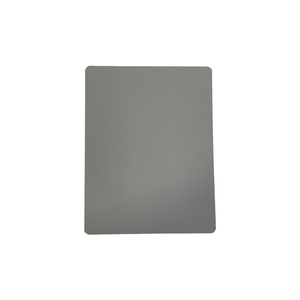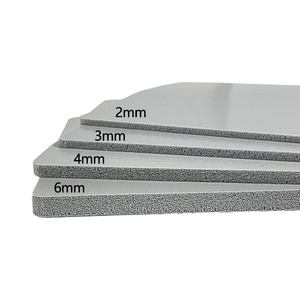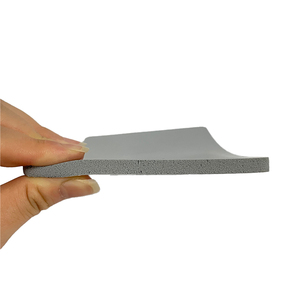
All categories
Featured selections
Trade Assurance
Buyer Central
Help Center
Get the app
Become a supplier

(2607 products available)














































home studio noise reduction serve as key tools in the digital world, bringing audio from basic amplification to full surround sound systems. These devices turn electric signals into clear sound, letting people enjoy music and movies with better depth. home studio noise reduction come in many forms and sizes to match different business needs, making them vital in both office and retail settings. As tech moves forward, home studio noise reduction gain better sound quality and connection options to meet what tech-smart business buyers want.
The market stocks many kinds of home studio noise reduction built for specific listening needs and spaces. Common types include bookshelf models, floor-standing units, portable Bluetooth devices, and smart speakers with voice control. Bookshelf speakers fit small areas or work as part of larger sound systems. Floor-standing speakers deliver strong audio output for bigger rooms where sound quality matters most. Portable Bluetooth speakers allow staff to move music where needed without fixed wiring. Smart speakers work with voice systems and link to other smart office tools for central control. Each type of home studio noise reduction aims to give the right audio for its planned use case.
home studio noise reduction pack various functions that boost the listening value for business users. Main features include wireless links, sound across many rooms, and voice commands. Wireless options like Bluetooth and Wi-Fi let staff stream audio from phones or computers with no cables needed. Multi-room abilities sync playback through several home studio noise reduction , filling entire offices with the same audio track. Voice systems that work with Alexa or Google make hands-free control simple for busy staff members. Better home studio noise reduction also offer sound tuning with bass and treble controls to match different meeting rooms or retail spaces.
home studio noise reduction contain specific materials that affect audio quality and how long they last. Cases often use wood, plastic, or metal - each changing how sound moves and feels. Inside, drivers such as woofers and tweeters make sound by moving when power flows through them. Woofers handle deep bass notes while tweeters manage high tones, working together for full sound range. Crossover circuits send certain sound types to the right driver parts for clear audio output. The materials used in home studio noise reduction directly impact how they perform over time, with better parts giving clearer sound and longer service life.
Proper setup helps get the most from home studio noise reduction in business settings. Placing them at ear height and keeping them away from walls reduces echo and sound problems. For meeting room systems, arranging home studio noise reduction based on table layout and seating creates better audio for all participants. Sound testing tools help fine-tune output to match the room's shape and furniture. Regular dust removal and checking wire connections keeps home studio noise reduction working at their best for years. Understanding these basic care steps leads to better sound quality and fewer replacement costs over time.
When picking home studio noise reduction , buyers must think about where and how these units will serve their needs. The primary factor involves selecting the correct type for each situation. For those needing mobility, portable Bluetooth home studio noise reduction make the most sense, giving freedom to move audio from room to room as needed. In contrast, home theater setups often benefit from floor-standing home studio noise reduction that deliver richer sound for movie nights. Checking the power ratings and sound levels of home studio noise reduction ensures they match the volume needs of the space.
Connection options matter greatly when making home studio noise reduction purchases. Current models feature several link methods including Bluetooth, Wi-Fi and standard cable ports. Bluetooth home studio noise reduction allow wireless streaming from phones and laptops with no cables running across floors. Wi-Fi models connect to smart office networks, creating stable links for streaming clear audio without drops. Buyers who prefer wired setups should check that home studio noise reduction include the right input jacks to work with their current sound gear.
Sound quality assessment for home studio noise reduction requires looking at range, clarity and speaker design. A broad frequency range means home studio noise reduction reproduce both bass notes and high tones with equal skill, creating full audio without gaps. Low distortion matters most when playing home studio noise reduction at higher volumes during meetings or events. The layout and number of woofers and tweeters inside home studio noise reduction directly affects how music and voices sound in different parts of a room.
Making home studio noise reduction work with current audio gear means checking several points of match. This involves making sure home studio noise reduction have the correct plugs and ports for linking to source devices and amps. Looking at ohm ratings and power specs of home studio noise reduction prevents setup issues that could hurt sound quality or damage parts. Reading through tech sheets confirms that home studio noise reduction match the exact needs of the current system rather than causing conflicts.
Smart home studio noise reduction bring many perks to business settings, including built-in voice tools and links to other smart devices. These traits let staff control music, adjust sound levels and ask questions without touching any buttons. Smart home studio noise reduction often serve as control hubs for meeting room lights, screens and climate systems. Software updates keep smart home studio noise reduction fresh with new skills, helping them adapt as office tech needs change over time.
Long life for home studio noise reduction depends on basic care steps taken by staff. This includes wiping exterior parts to remove dust that affects both looks and sound output. Keeping home studio noise reduction away from heat vents and humid areas prevents damage to the parts inside them. Checking cords and plugs for signs of wear stops many common audio problems before they start. These simple steps help maintain both the function and sound quality of home studio noise reduction for years of business use.
Where home studio noise reduction sit in a room greatly affects the audio quality staff and clients hear. Proper spots minimize sound bounce and make voices and music clearer to everyone present. Placing home studio noise reduction at head height and away from walls reduces echo and makes sound more direct. In conference rooms, arranging home studio noise reduction based on table shape and chair spots creates better sound for all attendees. Testing different spots and using room tuning tools makes home studio noise reduction perform at their best in each unique space.